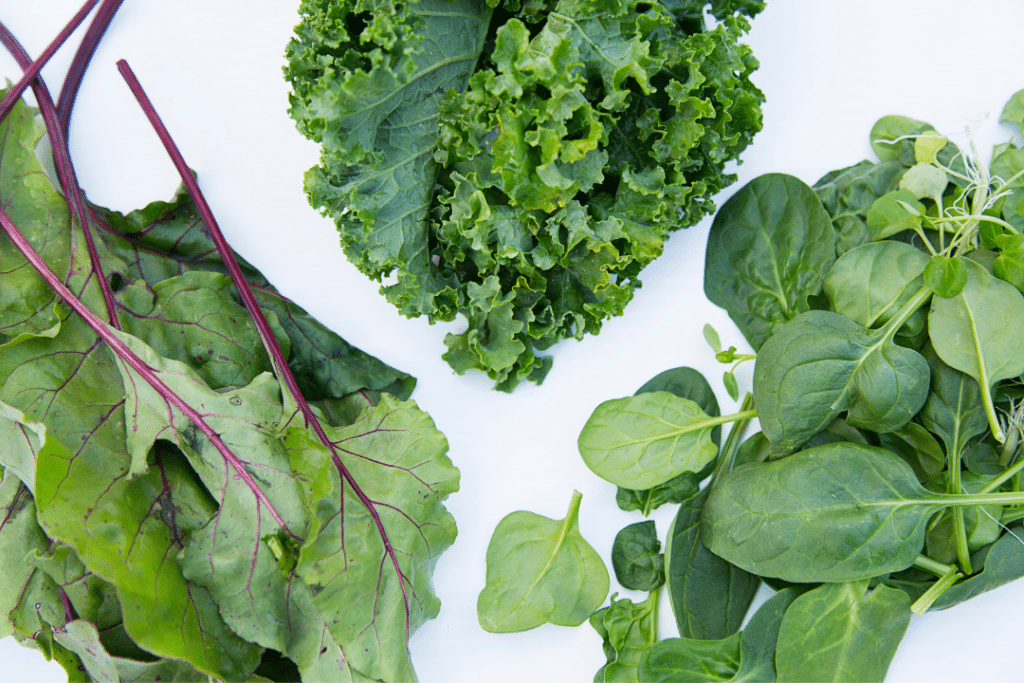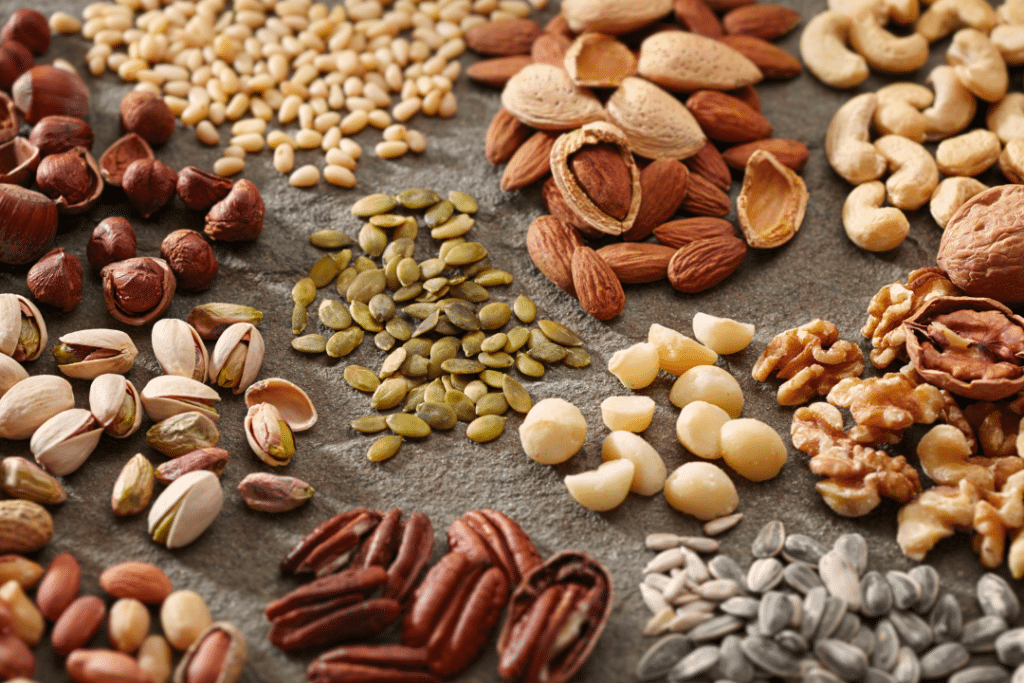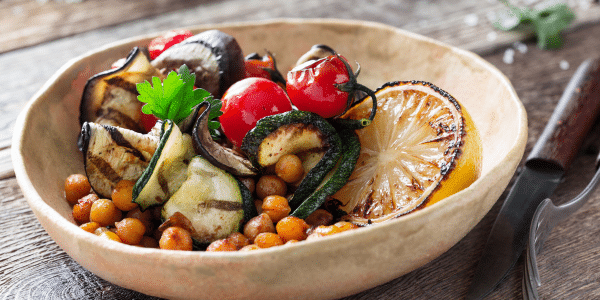Plant-Powered Plate: A Closer Look at the WFPB Diet
Are you constantly searching for a diet that could help improve your health and manage your weight? A whole food plant-based diet (WFPB diet) might just be the solution. If you look for plant-based ingredients and plant foods to maintain your healthy eating lifestyle, this diet may be exactly what you’re looking for.
In this article, we will dive deeper into what it means to follow a WFPB diet, its numerous benefits, and how it can potentially transform your life and health.
Get ready to turn over a new leaf (literally)!
Key Takeaways
- A whole food plant-based diet (WFPB diet) focuses on nutrient-dense, minimally processed foods derived from plants.
- Following a WFPB diet can improve overall health, weight management, heart health, and diabetes prevention/reversal.
- Foods like beans and legumes, leafy greens, fruits and vegetables, tofu and tempeh, nuts, seeds, and whole grains are essential in a WFPB diet.
Disclaimer: This article is for informational purposes only and is not meant to treat or diagnose any condition. It is recommended that you speak with your doctor before starting any exercise program, changing your daily nutrition, or adding any supplements to your regimen.
What is a Whole Food Plant-Based Diet (WFPB Diet)?
A whole food plant-based diet (WFPB diet) focuses on consuming nutrient-dense foods that are minimally processed and derived from plants.
What is the WFPB Diet?
A whole food plant-based diet primarily consists of eating more fruits and vegetables, beans, whole grains, and nuts. It emphasizes consuming foods in their most natural state while steering clear from animal foods and products as well as highly processed foods.
A WFPB diet not only avoids meat like a vegan diet but also focuses on minimizing fats by limiting oil intake. Adopting a WFPB diet and WFPB eating reaches beyond mere food choices; it represents a lifestyle committed to promoting good health and environmental sustainability.
What are the differences between WFPB diet and a vegan diet?
Vegans and plant-based eaters steer clear of products derived from animals, not only in their diet but other aspects of life, such as clothing and cosmetics. However, a vegan diet could include processed foods and those high in sugar or unhealthy fats.

In contrast, a WFPB diet focuses on whole plant-based foods that offer rich nutrients minus the harmful additives found in processed meals (unlike most of the Western diet and standard American diet). This means one following a WFPB diet may consume fruits, vegetables, legumes, seeds, nuts, and whole grains while avoiding heavily processed items, even if they are plant-derived.
Related Article: The Vegan Diet and Supplemental B12 — Are You Deficient?
Henceforth lies the key difference: A vegan might eat fried chips as it does not contain animal derivatives, whereas someone on a WFPB diet would skip this due to its highly processed nature.
Potential Health Benefits of a WFPB Diet
A WFPB diet offers numerous benefits for improved overall health, weight management, heart health, and diabetes prevention/reversal.
1. Improved overall health
Choosing a whole food plant-based diet and focusing on eating plant-based items can enhance overall health in many ways. A WFPB diet is rich in fiber, which promotes good digestive health and keeps you satiated for longer periods, preventing overeating.
By focusing on fruits, vegetables, beans, and grains while limiting meat products and processed foods, this dietary pattern supports healthy living by providing all the required nutrients for optimal function of your body systems.
Regularly consuming plant-based meals is associated with a lower risk of chronic diseases like heart disease and diabetes significantly. In conclusion, due to their improved nutritional intake, many people follow plant-based diets to help increase energy levels and better mood.
2. Weight management
Whole food plant-based diets are effective for weight management. This type of diet is low in fat and high in fiber, which helps you feel fuller for longer periods of time.
The high fiber content also aids digestion and supports healthy gut bacteria. Additionally, plant-based foods are generally lower in calories compared to animal products, making it easier to maintain a healthy weight.
By focusing on whole fruits and vegetables, beans, whole grains, and nuts, a WFPB diet provides essential nutrients while being effective for weight loss or maintenance.
If weight loss is your goal through this diet, you may find it beneficial to use a journal and food log specific to the WFPB diet.
3. Heart health
A whole food plant-based diet can significantly improve heart health and help provide a lower risk of heart disease. This type of diet is rich in fruits, vegetables, whole grains, and nuts – all foods that are known to promote cardiovascular health.
The high fiber content in these plant-based foods helps lower cholesterol levels and reduces the risk of heart disease. Additionally, a WFPB diet is low in saturated fats found in animal products, which can lead to clogged arteries and high blood pressure.
By switching to a plant-based diet, individuals can take proactive steps towards maintaining a healthy heart and reducing their chances of developing heart-related conditions.
4. Diabetes prevention/reversal
A whole food plant-based diet has been shown to be an effective way to prevent and even reverse diabetes. This plant-based eating approach focuses on consuming whole foods like fruits, vegetables, beans, whole grains, and nuts while keeping fat intake low.
The high fiber content of a WFPB diet helps regulate blood sugar levels, reducing the risk of developing type 2 diabetes. Additionally, research has found that switching to a plant-based diet can improve insulin sensitivity in individuals with diabetes.
By following a WFPB diet, you can take control of your health and potentially reduce your risk or manage existing diabetes without relying solely on medication.
5. Environmental sustainability
A whole food plant-based diet not only offers numerous health benefits but also promotes environmental sustainability. By focusing on plant-based foods, this eating plan reduces the demand for animal agriculture, which is a major contributor to greenhouse gas emissions and deforestation.
Choosing fruits, vegetables, beans, whole grains, and nuts over meat and dairy products helps conserve resources like water and land. Additionally, embracing a WFPB diet supports biodiversity as it reduces habitat destruction caused by industrial farming practices.
By adopting a plant-powered plate, you can contribute to a healthier planet while improving your own well-being.
Plant-Based Meal and Foods to Eat in a WFPB Diet
If you’re unsure what foods this diet actually includes, we’ll help you get started with the list below and guide you through everything you need to know regarding food groups. Include a variety of nutrient-rich foods such as beans and legumes, leafy greens, fruits and vegetables, tofu and tempeh, nuts, seeds, and whole grains.
1. Beans and legumes
Beans and legumes are an important component of a plant-based lifestyle. These nutrient-dense foods provide an excellent source of plant-based protein, fiber, vitamins, and minerals.
Incorporating beans and legumes into your meals can help support weight management and improve overall health.
Not only are beans and legumes filling and affordable, but they also offer numerous health benefits. They have been linked to reducing the risk of heart disease, diabetes prevention/reversal, and promoting digestive health due to their high fiber content.
Additionally, these plant-based powerhouses contain antioxidants that support a strong immune system.
By including a variety of beans such as black beans, chickpeas (also known as garbanzo beans), lentils, and kidney beans in your meals or snacks, you can enhance the nutritional value while enjoying delicious flavors.
2. Leafy greens

Leafy greens are a key component of a whole food plant-based diet. They are packed with essential nutrients like vitamins A, C, and K, as well as fiber and minerals. Incorporating leafy greens into your meals can promote healthy digestion and support weight management.
Spinach, kale, Swiss chard, and collard greens are just a few examples of nutrient-dense leafy greens that you can add to salads, stir-fries, or smoothies for an extra boost of nutrition.
Don’t miss out on the numerous health benefits these vibrant greens offer!
3. Fruits and vegetables
A WFPB diet places a strong emphasis on fruits and vegetables. These nutrient-packed powerhouses are essential for optimal health and longevity. Fruits and vegetables provide an abundance of vitamins, minerals, antioxidants, and fiber that support overall well-being.
They also help to lower the risk of chronic diseases such as heart disease, cancer, and obesity. Incorporating a variety of colorful fruits and vegetables into your meals can help you meet your daily nutrition needs while adding delicious flavors to your plate.
So go ahead and savor the sweetness of berries or indulge in the crisp crunchiness of leafy greens — your body will thank you!
4. Tofu and tempeh
Tofu and tempeh are two versatile plant-based protein sources that can be enjoyed on a WFPB diet. Tofu is made from soybeans and has a mild flavor, making it perfect for absorbing the flavors of dishes you cook with it.
It’s also rich in protein, iron, calcium, and essential amino acids. Tempeh, on the other hand, is made by fermenting soybeans and has a nutty taste. It’s high in fiber and packed with nutrients like protein, magnesium, and vitamin B12.
Both tofu and tempeh can be used in stir-fries, soups, salads, or even grilled as a meat substitute. Incorporating these plant-based proteins into your meals will not only add variety but also provide essential nutrients your body needs for optimal health.
5. Nuts, seeds, and whole grains

Nuts, seeds, and whole grains are essential components of a whole food plant-based diet. These nutritious foods provide a wide range of health benefits to support your overall well-being.
Nuts like almonds, walnuts, and cashews are packed with healthy fats, protein, and fiber that can help reduce the risk of heart disease. Seeds such as chia seeds and flaxseeds offer an excellent source of omega-3 fatty acids for brain health.
Whole grains like brown rice, quinoa, and oats are high in fiber and provide sustained energy throughout the day. By incorporating these plant-based foods into your meals, you can enhance the nutritional value of your diet while enjoying their delicious flavors.
Simple and Delicious WFPB Diet Recipes
Try out these mouthwatering plant-based recipes like Shiitake Mushroom and Butternut Squash Soup, Avocado Chocolate Mousse, and Thai Vegetable Curry for a nutritious and flavorful WFPB meal. These healthy recipes should definitely go into your must-try meals!
1. Shiitake Mushroom and Butternut Squash Soup
Shiitake Mushroom and Butternut Squash Soup is a delicious and nutritious plant-based meal option. Packed with flavor and wholesome ingredients, this soup is a perfect addition to a whole-food, plant-based diet.
Shiitake mushrooms provide an earthy taste while adding important nutrients like B vitamins and minerals. Butternut squash adds a creamy texture and is rich in antioxidants such as beta-carotene.

This soup not only satisfies your taste buds but also supports your overall health by providing fiber, vitamins, and minerals that are essential for healthy living. With its simplicity yet robust flavors, the Shiitake Mushroom and Butternut Squash Soup will surely impress both beginners and seasoned WFPB eaters alike.
2. Avocado Chocolate Mousse
Avocado chocolate mousse is a delicious and healthy dessert option for those following a WFPB diet. Made with just a few simple ingredients, including ripe avocados, cocoa powder, and sweeteners like dates or maple syrup, this creamy treat is rich in nutrients and packed with flavor.
Avocados provide heart-healthy fats and are also a good source of fiber. Plus, cocoa powder adds antioxidants to the mix. Whip up a batch of avocado chocolate mousse for your next sweet craving – it’s guilt-free indulgence at its best!
3. Thai Vegetable Curry
A delicious and nutritious addition to a whole food plant-based diet is Thai Vegetable Curry. This flavorful dish combines a variety of colorful vegetables, aromatic herbs, and exotic spices to create a satisfying plant-based meal option.
With ingredients like bell peppers, carrots, broccoli, and mushrooms simmered in a creamy coconut milk base infused with fragrant curry paste, this dish is packed with vitamins, minerals, and fiber.
Thai Vegetable Curry not only offers a rich taste experience but also provides essential nutrients for optimal health. By incorporating this vibrant plant-based recipe into your meal rotation, you can enjoy the benefits of improved overall health while savoring the flavors of Thai cuisine.
4. Nutritious vegan ingredients to replace meat
A WFPB diet offers a variety of nutritious vegan ingredients that can replace meat in your meals. By choosing these alternatives, you can still enjoy the flavors and textures you love while taking care of your health and the environment.
Legumes like beans, lentils, and chickpeas are excellent sources of protein, fiber, and essential nutrients. Tofu and tempeh provide a satisfying texture and are packed with plant-based protein.
For added crunch and healthy fats, incorporate nuts and seeds into your dishes. Whole grains such as quinoa or brown rice can be used as a base for hearty plant-based meals. So next time you’re cooking up a storm in the kitchen, consider these nutritious vegan options to replace meat!
5. Plant-based shopping tips and WFPB diet success stories
When it comes to shopping for a plant-based diet, there are a few key tips that can help make your experience easier and more successful. Start by planning your meals and making a grocery list before you go to the store.
This will ensure that you have all the ingredients you need on hand. When shopping, focus on the produce section and load up on fruits and vegetables of different colors to get a variety of nutrients.
Don’t forget to check out the bulk section for nuts, seeds, and whole grains, which often offer better prices compared to pre-packaged options. Lastly, don’t be afraid to try new foods and recipes — you might just discover some delicious plant-based alternatives!

Success stories abound from people who have made the switch to a plant-based diet. Many individuals have experienced significant weight loss, improved digestion, increased energy levels, and even reversed chronic diseases such as heart disease or diabetes after adopting this way of eating.
Others report feeling more vibrant and alive with glowing skin and hair as they nourish their bodies with nutrient-dense whole foods. With so many benefits awaiting those who choose a plant-powered lifestyle, it’s no wonder why more people are embracing this healthy way of living.
You could even pick up one of the WFPB diet books below for even more recipes and food options:
Is the WFPB Diet Something You’re Going to Try?
Discover the power of a plant-based plate and reap the amazing benefits it offers. Improve your overall health, manage weight effectively, protect your heart, and even prevent or reverse diabetes.
Embrace a WFPB diet and experience the transformative impact of whole food plant-based eating on your body and the environment.
WFPB Diet FAQs
A whole food plant-based diet involves consuming meals primarily composed of healthy, whole food ingredients and avoiding animal products.
No, while both diets focus on plant-based nutrition, a WFPB diet centers more on unprocessed foods or those that have been minimally processed.
Yes! A balanced and well-planned WFPB diet can provide all the essential nutrients your body needs for optimal health.
The WFPB Diet includes fruits, vegetables, legumes like lentils and beans, and whole grains such as brown rice and oats — all sourced from natural plant-based nutrition providers.


*Disclosure: This article may contain affiliate links or ads, which means we earn a small commission at no extra cost to you if you make a purchase through these links. These commissions help support the operation and maintenance of our website, allowing us to continue producing free valuable content. Your support is genuinely appreciated, whether you choose to use our links or not. Thank you for being a part of our community and enjoying our content.
PLEASE CONSIDER SHARING THIS ON YOUR SOCIAL MEDIA TO HELP OTHERS LEARN MORE ABOUT THIS TOPIC.





